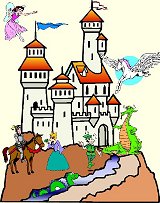|
Folkmanis
Stuffed
Sea Serpent
An
award winning premium quality stuffed sea serpent
from Folkmanis that double as hand puppets!
Movable tongue and eyes.
|
60
Inches Long
Folkmanis
Stuffed
Sea Serpent
FM2298
$62.50
Sold Out
Discontinued
25 Nov 08
|
|
Sea
Serpent - mythological and legendary marine animal that
traditionally resembles an enormous snake. The belief in huge
creatures that inhabited the deep was widespread throughout the
ancient world. In the Old Testament there are several allusions to a
primordial combat between God and a monstrous adversary variously
named Leviathan
or Rahab. Although the references to Leviathan usually indicate a
dragon-like creature, the name has also been used to denote a sea
monster in general (see dragon).
Analogies to this combat are found throughout the ancient Middle East.
Babylonian literature records a battle between the god Marduk and the
multi-headed serpent-dragon Tiamat, and in Hittite myth the weather
god is victorious over the dragon Illuyankas. Similarly, a Canaanite
poem from Ras Shamra (ancient Ugarit) in northern Syria records a
battle between the god Baal and a monster called Leviathan. The story
of Marduk's combat with Tiamat is thought to be a precursor of the
Christian legend of St. George and the dragon.
Although
tales of sea serpents have continued to exist throughout the
centuries, no animal has been captured so far that has not proved to
belong to a previously well-known group. A large number of the
well-authenticated stories of monstrous marine creatures seem to be
explicable as incorrect observations of animals already well known.
For example, a number of porpoises swimming one behind the other and
rising regularly to take air might produce the appearance of a very
large serpentlike creature progressing by a series of vertical
undulations. Large masses of seaweed half awash often have been
mistaken for some gigantic animal. Basking sharks, nemertines (marine
worms), ribbonfish or oarfish (Regalecus), and sea lions have
also been suggested as explanations of some so-called sea serpents.
Giant
squids
(Architeuthis
species) are presumably the foundation on which many accounts are
based; these animals, which may attain a total length of 50 feet (15
metres), occasionally frequent the regions from which many accounts of
sea serpents have come—Scandinavia, Denmark, the British Isles, and
the eastern coasts of North America. One of these animals swimming at
the surface with two enormously elongate arms trailing along through
the water would produce almost exactly the picture that many of the
strangely consistent independent accounts require: a general
cylindrical shape with a flattened head, appendages on the head and
neck, a dark colour on top and a lighter shade beneath, progression
steady and uniform, body straight but capable of being bent, and
spouting water. Further, sperm whales are known to kill and devour Architeuthis,
and one of the most graphic accounts of the sea serpents speaks of it
as in conflict with a whale around which it had thrown two coils and
which it ultimately dragged below the surface.
The
history of sightings of freshwater “monsters” is lengthy,
especially those of Loch
Ness in northern Scotland. They have been the object of much
investigation, all of it remaining inconclusive.
"sea serpent" Encyclopædia
Britannica from Encyclopædia Britannica Premium Service.
|

